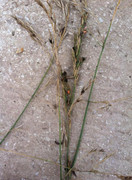I'm not promoting PCC... but they have done a great job marketing their grassfed bulls on very little inputs. And their policy of forcing out 10 to 15% of the herd is basically culling those that don't breed back on time or raise a great calf. More of us need to do that I'm sure.************* said:Banjo said:I think it was Kit Pharo that said they try to force out 10 to 15% of their cow herd every year.....by subjecting them to tough conditions.
Why not do the same with children. I saw a story once where a guy put his toddler out in a snow storm unclothed to see if he could make it. I think the authorities stepped in upon the kid's behalf.
There is a herd near me, that for all practical purposes has to work overtime to stay alive, pasture as low as a putting green, thank goodness for the weeds and fence line brush to keep them going. They are alive, you can say that, but you probably wouldn't bid jack sh.t for them in an auction ring. Maybe to buy them and put them out of their misery. Poor things. I look away as I drive past them.
Something tells me that they are on the "survival of the fittest" plan, and minerals are an afterthought.
Is this guy producing superior genetics through calorie deprivation and a anti-mineral/vaccine plan? Or is he producing dogfood?
We should all take a comprehensive forage sample occasionally that showed the levels of essential nutrients in our forage.
I've never done it but am going to.


